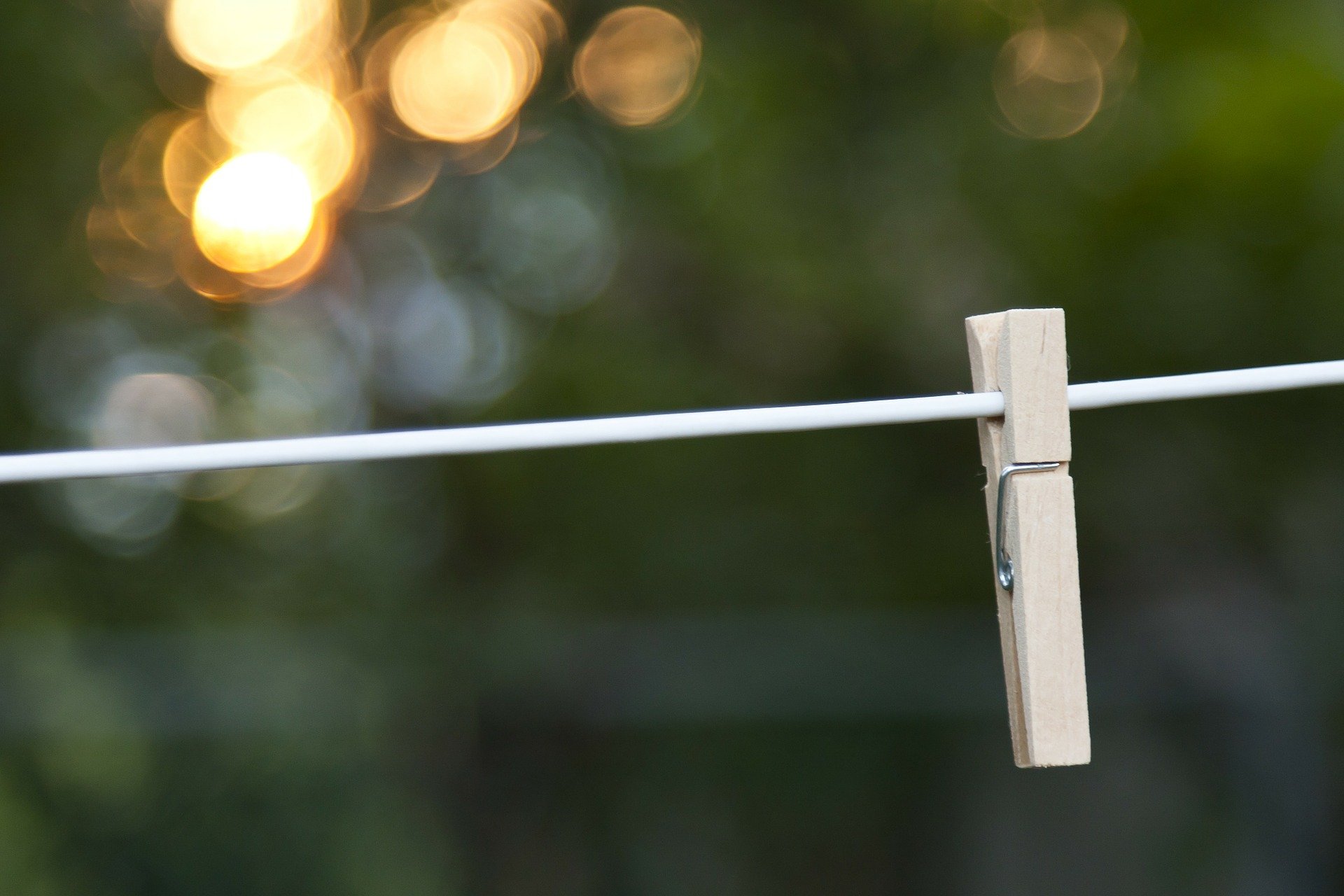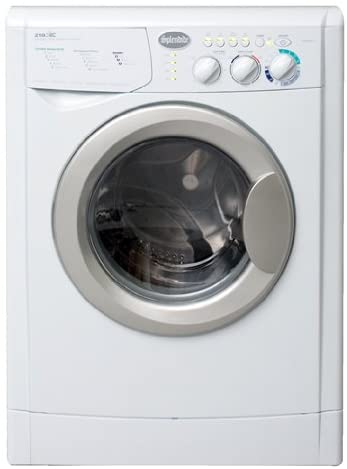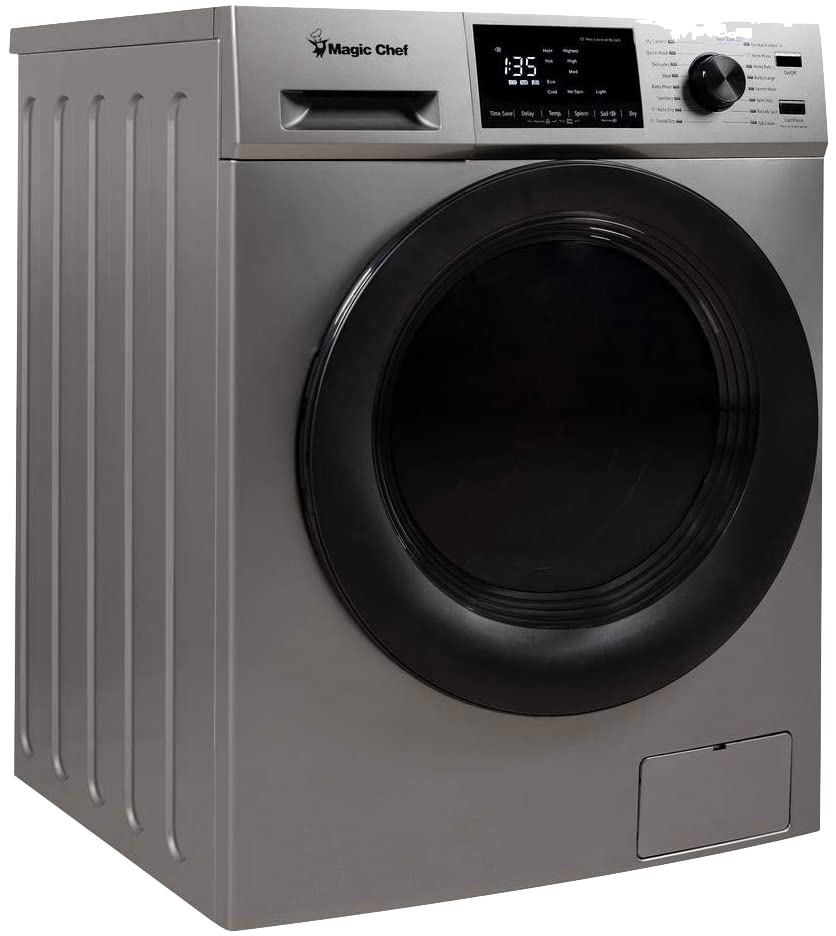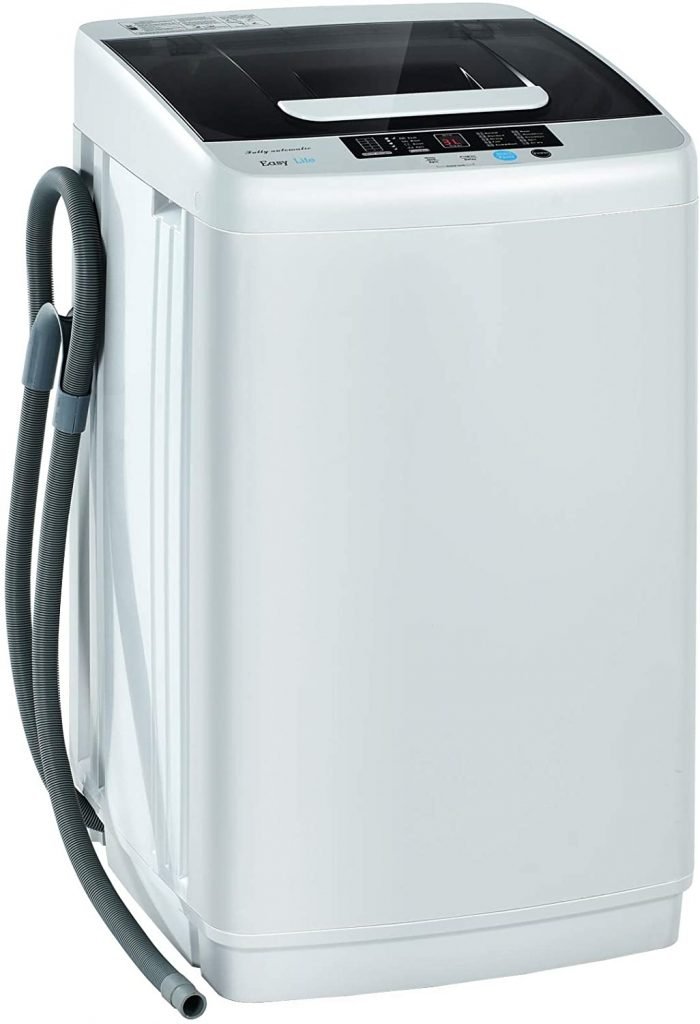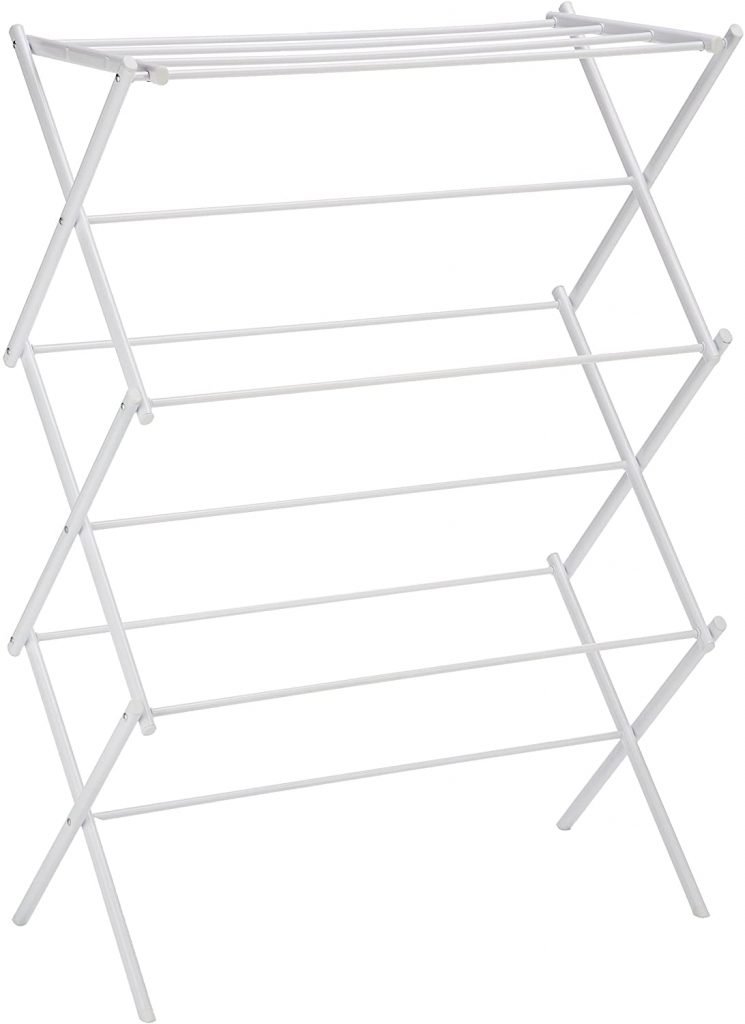Today is Sunday, and for us, Sundays are laundry days. But what if you live in a converted school bus? You’ve still got plenty of laundry options, thanks to a number of companies catering to the off-grid and small apartment crowds. This blog post covers different skoolie laundry options from fully electric to fully manual.
If you’re living in a school bus, you probably don’t count yourself among the high fashion crowd. But at the same time, you don’t want to wear the same outfit in every trip photo, either. Minimalism and bus life go well together, but reducing your wardrobe doesn’t have to mean wearing the same thing every day.
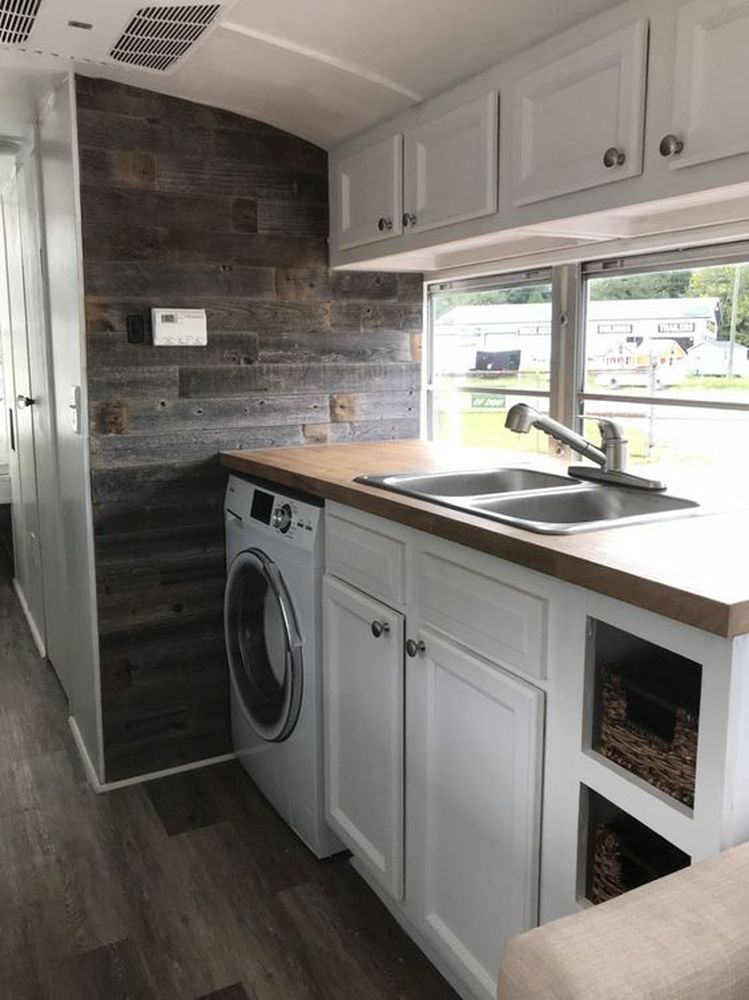
Your Options for Laundry On a School Bus
As with many questions, the answer to “what is the best laundry option for me?” is “it depends”. The main factors in this case are:
- Number of people in the bus, and amount of laundry: are you traveling solo? Do you have five kids traveling with you? Somewhere in between?
- Electric vs non-electric: if you don’t have electric hookups in your bus, then your options are more limited.
- Bus space: how much space do you have to devote to laundry?
- Amount of energy consumption if you’ve got a battery bank, then the next question is, how big is that battery bank? Washers can have surprisingly low energy requirements. But dryers that use heat to dry (instead of spinning) can have a huge energy footprint. These appliances typically require ventilation as well.
If you don’t have the space for laundry in your bus, or don’t mind planning laundry into your itinerary, then just stopping at a laundromat might be the best option for you. Otherwise, you can:
- Buy a combination washer/dryer that washes and dries a load of laundry in the same appliance.
- Get an energy efficient washer to wash your clothes and either spin or hang your clothes to dry.
- Go the fully manual route and wash your clothes with a hand-cranked washer, and hang your clothes to dry them.
Skoolie Laundry Option #1: Combination Washer/Dryer
The upsides of buying an all-in-one washer/dryer for your skoolie laundry:
- Convenience, convenience, convenience. Using these appliances is typically a “set it and forget it” operation where you don’t have to transfer laundry, or manually wash anything yourself.
- Closer to an at-home experience in terms of functionality and usage. These brands usually have settings for different types of clothing as well.
- More efficient than standard washers and dryers. While these devices definitely are not more energy efficient than the other options on the list, they are typically more energy efficient than visiting a laundromat because they are cutting-edge appliances.
- Not that much of a size difference over having an electric washer (option #2).
The downsides of combination washer/dryers:
- Price. These can cost upwards of $1000-$1500, so this is not the most economical option. For families with a lot of laundry, it might be worth the time savings.
- Electricity usage: using heat to dry clothes is very energy-expensive, so if you go this route, you need to make sure your battery bank can handle it, or only do laundry while connected to “shore power”.
- Space: these combo appliances are usually designed for small apartments, so they aren’t as large as traditional appliances. But they still do take up space, and you will need to plan your bus around it.
- Ventilation: you will likely need to plan ventilation into your bus to support the dryer functionality. This might make your floorplan more complicated, and will drive up construction time and cost.
- Weight: these things are heaaaavy, and are often upwards of 100-150 pounds.
Combo washer/dryer options
One good option here is the Splendide WD2100XC, which has many positive reviews from buyers who have installed the WD2100XC in their RVs or motorhomes. This option does require ventilation, however.
If you liked the idea of a combo appliance for your skoolie laundry, but can’t do a vent, check out this option from Magic Chef:
Option #2: Electric Washer, Air Dry
A good half-way solution between fully electric and fully manual is to have an electric washer and then air the clothes dry.
The upsides are:
- Cheaper than a combo washer/dryer: buying just a washer will cost about 1/4 the price of a washer/dryer combo.
- More energy efficient than a combo washer/dryer: drying clothes is the more energy consuming part of laundry.
- More convenient: you save yourself the time and effort of cranking or spinning your laundry dry.
- Spin dry: while you still need to hang your clothes to dry the rest of the way, these options often spin the clothes dry which cuts down on air drying time.
- No venting required.
And the downsides of handling your skoolie laundry this way:
- Requires electricity: while these are more energy efficient than a combo washer/dryer, doing your skoolie laundry is still going to require some
- Not fully automated: you still need to hang up and air dry your clothes. Depending on how much space you have inside, this might require some outdoor drying.
- Some options are limited by capacity: this seems to be an ideal solution for couples traveling, but some appliance models may be too small for families.
- Roughly the same footprint as a combo option but without the drying functionality.
Combo electric washer, non-electric dryer options
Thanks to companies catering to college kids living in dorms, there are a ton of small footprint, affordable options that can even be hooked up to a sink faucet!
This option from Giantex has a hose to hook up to water (including a faucet) and a drain hose. It also has a child lock lid, and 5 different water usage options.
You will also need a foldable drying rack, such as this one from SONGMICS.
Another option is to go to your local home improvement store and buy a small, energy efficient washer, as though you were shopping for your home. This is how we found our washer (although it is not installed in the bus yet, we’ve done tests with it hooked up in our garage). If we hadn’t gotten such a good deal locally, we would have chosen an Amazon option instead.
This strategy isn’t always successful, however, because home improvement stores are typically not catering their appliance selection to people in skoolies and RVs. Energy efficiency is still a priority for at-home devices, but these devices might still be above your battery bank limits.
Option #3: Non-Electric Washer and Dryer
If you want a more environmentally friendly option that also costs less than the other options, then consider going non-electric.
The upsides of doing all your skoolie laundry by hand:
- Lower cost: the appliances cost much less money. You can get a hand washer for about $50.
- No electricity needed: no need to plan laundry into your energy budget, or change your trip plans to find an electricity hookup to wash your clothes.
- No venting needed: air drying means that no ventilation hookups, and you don’t have to install it anywhere.
- Space: these appliances are small, so they can fit in to extra space as an afterthought, instead of something you need to plan in advance.
- Exercise: depending on your viewpoint, this can be a pro or a con. Since you are manually cranking or pumping the clothes to wash them, you can get a workout in while doing your laundry.
The downsides of doing your skoolie laundry by hand:
- Less convenient: these are a far cry from the “set it and forget it” appliance in option #1. You need to devote time to doing laundry a couple times a week, and likely can’t multitask.
- Lower capacity: these are not meant for huge amounts of laundry. This might be okay if you’re a solo traveler, less so if you’ve got a big family.
- Not suited for bigger items: this option probably won’t work for bulkier items like blankets, so you might be stopping at a laundromat from time to time.
- Not necessarily more water efficient than the previous options. This varies by product but you might be using as much or more water doing things by hand than with an electric option. For example, this hand washer takes 10 gallons per load.
Non-electric washer and dryer options
Here’s a good option for hand-washing your laundry. You put your clothes inside, add about 3 gallons of water, add in detergent, and crank it for two minutes to wash. Repeat without detergent to rinse.
You’ll also need an airdrying method. You can use the drying rack from option #2, or another basic drying rack like this one:
If hand-cranking sounds annoying, there’s also this option which allows you to push down and pull up with both arms (left) and another one that is more like a salad spinner (right).
Minimizing Your Skoolie Laundry Load Without Minimizing Style
The other side of this equation is to have less laundry to wash. But how do you do that without sacrificing style?
I do not count myself among the fashionista crowd but I still like to wear different outfits in different photos (and since everyone has smartphones these days, there’s a lot of photos!)
To manage this I use a capsule wardrobe approach, both while traveling and at home. This example is more fashion focused than I feel is necessary when I travel on a skoolie, but the idea is the same:

The idea is you have a small number of clothing items that all work well with each other. This allows you to get the most variety out of the smallest number of items. No more “I can’t wear this top with those pants”. Everything needs to go with everything else. Fewer items = less skoolie laundry.
How do you make this work?

- Aim for roughly half of your wardrobe to be black, white, navy, and gray. I got this idea from Next Level Wardrobe, who uses this approach for styling her executive clients. Sticking to this idea will make you look effortlessly put together.
- Have 35% of your wardrobe be tonal colors like light blue, khaki, and shades or variations on the core colors (black, white, navy, and gray).
- The remaining 15% can be bright and/or trendy colors.
- Layer as much as possible. This helps you dress for changing temperatures, but also adds more variety with a few extra additions to your wardrobe.
If you were to have 4 pairs of bottoms (pants, jeans, skirts, etc) and 5 tops, then you have up to 20 combinations (4 x 5) of bottoms and tops.
If you were to add in layering pieces, such as cardigans or light jackets, you can add more variety to your outfits and effectively multiply the outfit options by two. So with 4 bottoms, 5 tops, and 2 layering pieces, you have 40 different outfits.
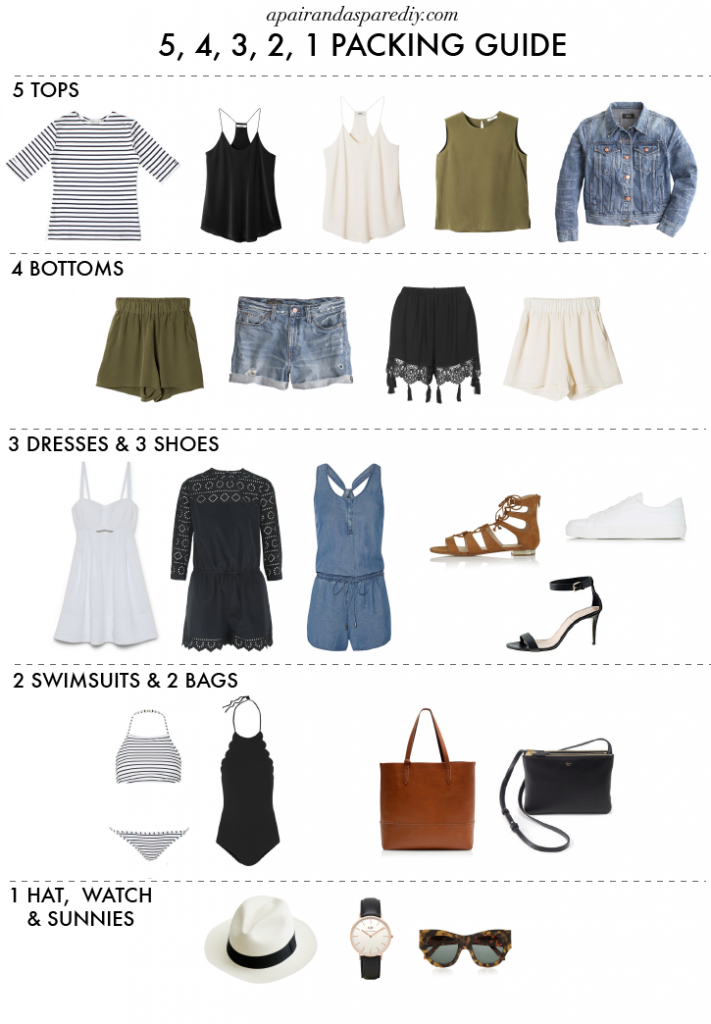
That’s over a month’s worth of unique outfits with 11 pieces of clothing! Obviously you will need to add in shoes and maybe a special occasion outfit, but this is a great way to pack lightly and stylishly while living on a skoolie. A smaller wardrobe means less time spent doing laundry in your skoolie.
Additionally, try to opt for durable, easy to care for fabrics (no linen or wrinkle-prone clothing). You can also extend time between washes by airing out clothing after wears.
How do you plan this out? Check out Stylebook, which is an app that lets you take photos of your clothes and then visually mix and match. You can import photos from clothing retailers as well, which can help you build a good capsule wardrobe.
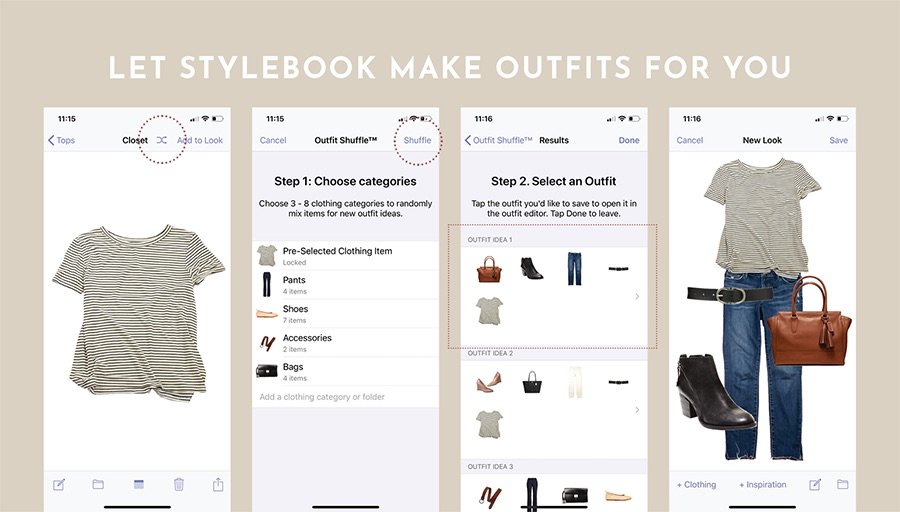
Happy laundry day!
